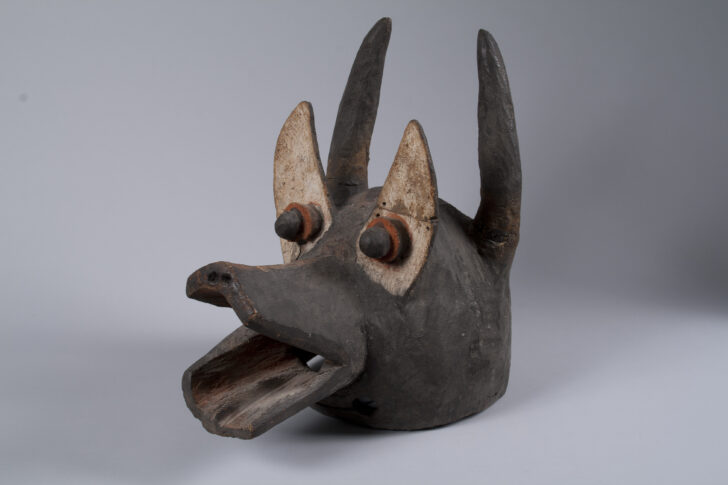Mask
Mambila

Description
Subject Matter:
Human and animal features come together in masks for Mambila men's sùàgà masquerade to celebrate male fertility. Sùàgà can best be described as a set of related masquerades and oaths performed in part to resolve local disputes. While both aspects are important, the imagery of the masks reinforce the ideas seen in the oaths. Men's sùàgà has carved masks worn horizontally on the head, sometimes accompanied by fiber costumes. Although different masks are given different names, some are called sùàgà due and sùàgà bur. While it is not clear what kind of animal is portrayed here, similar masks have been described as depicting a crow.
References Cited:
Gebauer, Paul. 1979. Art of Cameroon. Portland, Or.: Portland Art Museum.
Zeitlyn, David. 1994. "Mambila Figurines and Masquerades: Problems of Interpretation." African Arts, Vol. 27, No. 4, pp. 38-47+94.
Physical Description:
A wooden mask with zoomorphic features. The mouth is in the form of open, elongated lips. The eyes are formed by white triangular projections with small central knobs. Behind the eyes, at the back of the head, are two pointed projections that curve slightly inward.
Usage Rights:
If you are interested in using an image for a publication, please visit https://umma.umich.edu/request-image/ for more information and to fill out the online Image Rights and Reproductions Request Form.